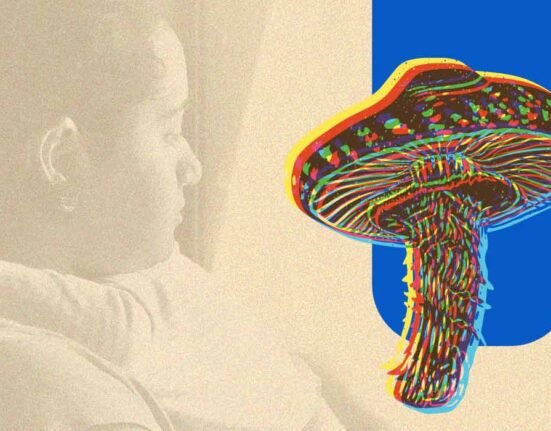We’re all familiar with that experience of being at a cafe, calmly drinking your espresso, only to notice that you cannot stop leaning in to catch a glimpse of the mayhem on the other side. Picture them in action as they arrive at their destination! So what’s all the hullabaloo? We’ve all experienced the binge. We become so engrossed in the destinies of characters we never knew. In reality, we may never even be able to know them. Yet we follow their stories for dozens of hours and seasons.
What if I told you that this nosiness isn’t just a human foible, it’s a human-chimpanzee trait. An illuminating new research has found that young human children and chimpanzees alike are instinctively nosy social scientists. This instinct may have evolutionary origins millions of years ago.
This research by an international legion of scientists, led in part by Dr. Laura Simone Lewis from the University of California, Santa Barbara and Dr. Esther Herrmann from the University of Portsmouth, explores at length the concept of social curiosity. It’s that hunger to claw to the surface of understanding what the heck everyone else is up to, building, dreaming, jostling for. As it turns out, it’s not only we humans that can’t resist a good story. Chimpanzees are just as addicted.
Read More: The Study for Evaluation of the Dichotomous link between Creativity and Mental Health
Expanding to Beyond the Material World
This research has played out in some pretty amazing contexts—from the Ngamba Island Chimpanzee Sanctuary in Uganda to the Oakland Zoo and Lawrence Hall of Science back in California. Researchers built up what they called “curiosity boxes”, wooden contraptions with tablets inside that displayed factory footage. Both chimps and children aged 4–6 years were allowed to either view clips of social activities like playing, grooming or fighting, or receive a video of an individual performing the same task in solitude. You might want to sit down for this one. Even when both groups 100 per cent selected the social environments. It’s as if the powers that be decided to scrap the lone wolf and replace it with, “Forget the lone wolf, give me the theatrics!”
This wasn’t a unique fluke one-off year’s test. The team upped the ante in a second experiment, forcing participants to decide between receiving a tangible reward—jackfruit seeds for the chimps, say, marbles for the children and watching a social video. What may surprise you most, though, is that most of them, especially the youngest children and the adult male chimps, forsook the reward to get a front-row seat to the action.
It’s like forgoing the muffin top on your lunch order to be able to eavesdrop on your coworkers’ hottest tea. This contemporary imperative to be up-to-date on everything and anything just out of pure interest, even at great expense, reveals how deeply ingrained the social curiosity is in our nature.
Read More: The study shows an overlooked link between Guns and suicidal thoughts in Adolescenc
Cheer Squad or Recess Rumble 3 Production, 2019–2023
In a third experiment, they investigated whether positive social interactions, to a greater degree, draw attention than negative ones (grooming/playing vs aggression). Chimpanzees didn’t show a preference for whether they could see or not. They were just really interested in what they were able to see. The human kids, of course. Their preferences evolved with age and by gender.
Yet, negative tracks started to dominate the interest of older boys, increasingly consumed by the lure of competition or confrontation, while girls gradually came to favour positive spaces as if developing a preference for a bond more muted or maternal. It’s just a narrow hint of an idea of what our social interests can flip to as we get older, shaped by an inescapable mixture of biology and atmosphere.
Read More: Kindness Makes Us Better Together: What a New Study Says About Being Nice
Why We Can’t Afford to Turn a Blind Eye
What’s so cool about this study, though, is that it’s not biased towards children or apes. It’s common to all of us as a species. By using the very same tools for all of the subjects, the researchers proved that social curiosity is not a characteristic we develop from culture or reality TV. Well, it’s biologically hard-wired, appearing very early in development and across the animal kingdom.
Our ancestors who survived surely did so at least in part because they possessed this quality. As Dr. Herrmann reminds us, this is a very encouraging and positive development. Knowing who’s buddies with whom, who’s their foe, or who’s got your back could mean the difference between life and death in a small-knit society. From bonding over binge-worthy series with our friends to diving into social media rabbit holes of TikTok, it’s no wonder that we’re still captivated by social hierarchies as adults.
Read More: Research Aptitude: Understanding Psychological Data and Designing Experiments
A Joint Family History of Evolution
This study of habits helped shine a light on my unhealthy lifestyle. Just the other weekend, I wasted half a day binge-watching a completely different competitive reality show, living vicariously through each toxic conflict and strategic alliance. It turns out that I’m not so different from a Ngamba Island chimp myself, peering in amazement at his new companions through a safari window.
Our collective fixation on everyone else’s business is, in fact, a species-wide evolutionary legacy, a deep history in which understanding the complex network of social connections enabled our predecessors to thrive and survive. Back in the lab, the researchers are still buzzing with eagerness to pursue the work. What do you think happens to our innate social curiosity as we grow up?
Does it differ across cultures or relative to other great apes like bonobos? There’s a critical distinction between people you know and strangers that speaks volumes to the power of the observing eye. These are all important and fascinating questions. They might help us better understand why some of us are social butterflies, while others are more cool and aloof.
At its heart, this research is an inspiring reawakening to our deep biological ties to the natural world. Our yearning to learn, to experience, to connect isn’t something new. It’s an age-old custom — as old as civilisation itself, or even the tool-using orangutan. So the next time you judge everyone in line or get hooked on the latest reality nonsense, don’t feel bad. You’re not inventing a gimmick — you’re sending out a signal that deeply resonates with the evolutionary curiosity that has long shaped us into the people we are today. On that scale, you’re only a genetic stone’s throw from a chimp. You are wide-eyed and are enchanted with the social pageantry of life, just like them.
FAQ
1. Join us as we explore social curiosity to unlock better questions!
It’s the universal motivation to explain people’s behaviour, interactions, and social environments, seen in adult humans as well as chimpanzees.
2. Key takeaways: What did the study discover
Whether in young children or chimps, curiosity compelled both to choose social interactions over solitary activities. They often gave up rewards just to indulge their curiosity.
3. Why social curiosity matters
As such, it probably developed to increase the chances of our ancestors’ survival. This was done by helping them perceive social hierarchies and alliances. This tendency is still visible in human behaviour today.













Leave feedback about this